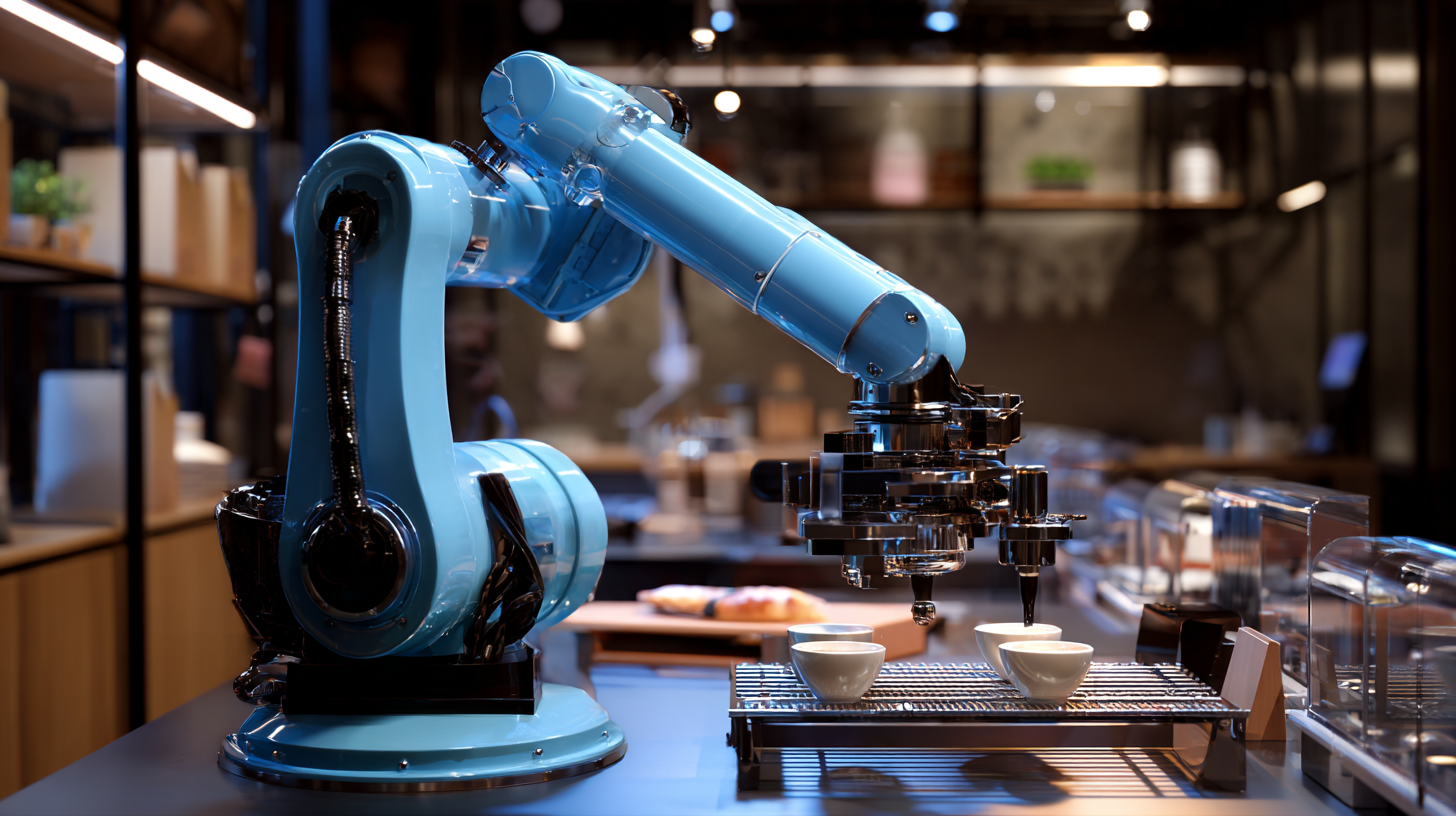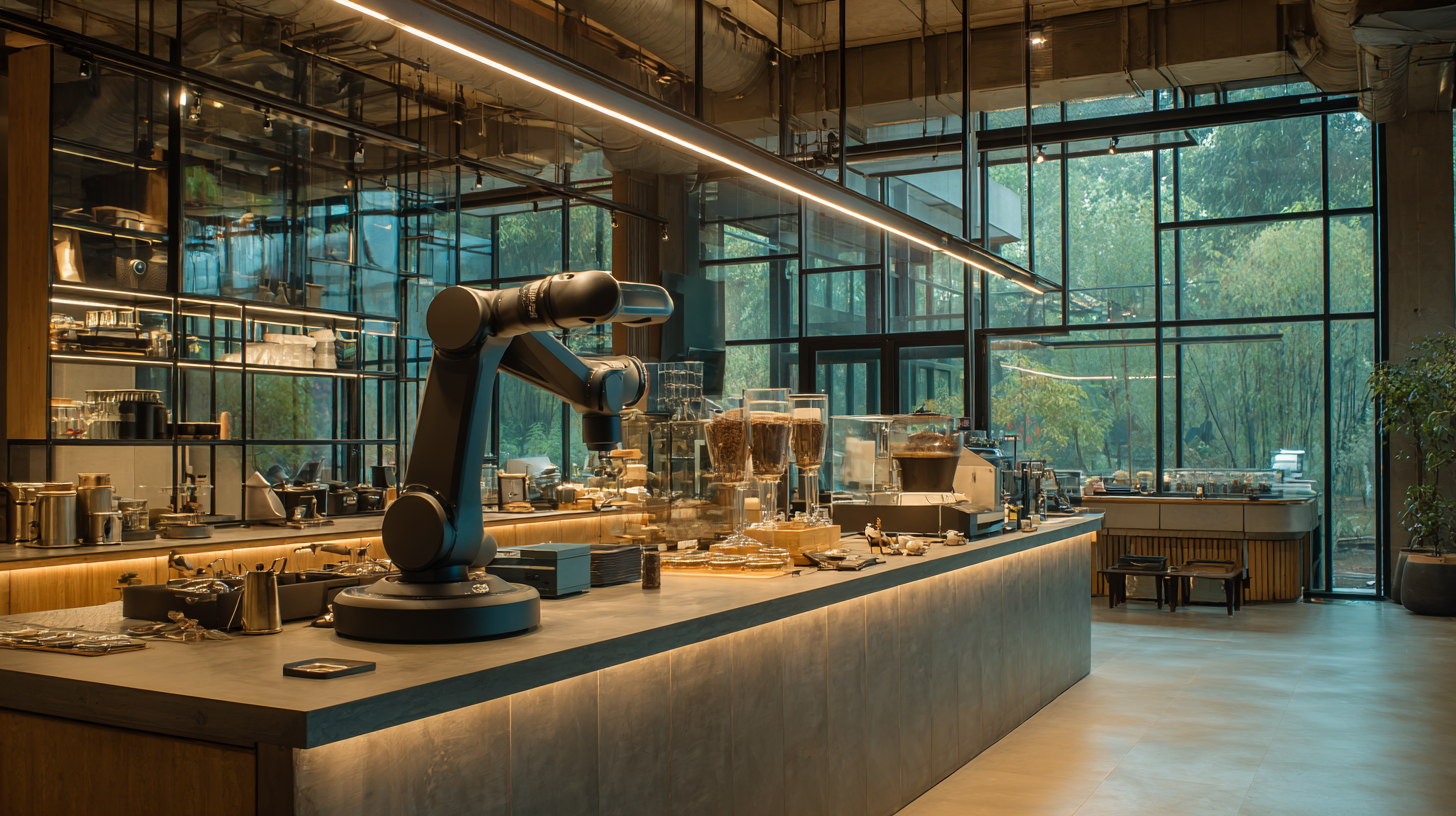The coffee shop industry is experiencing a technological revolution, with the rise of the Coffee Shop Robot becoming a focal point of innovation and efficiency. According to a recent report by MarketsandMarkets, the global market for robotics in the food and beverage sector is projected to reach USD 5.9 billion by 2026, propelled by increasing consumer demand for high-quality service and rapid beverage preparation.

As coffee shop owners seek ways to enhance customer experience while managing labor costs, these robots are becoming indispensable tools in modern café management. With advancements in artificial intelligence and robotics, Coffee Shop Robots not only streamline operations but also maintain consistency in quality, thus meeting the high expectations of today's coffee enthusiasts.
This blog will delve into the top industry standards that global buyers should consider when investing in these cutting-edge machines, ensuring they choose the best solutions for their businesses.
When considering the purchase of a coffee shop robot, understanding its key features is essential for ensuring optimal performance. One of the most crucial aspects is precision in coffee brewing. Advanced robots are equipped with sophisticated sensors and algorithms that guarantee consistent coffee quality, adjusting variables such as water temperature and brew time. This accuracy not only enhances the flavor profile but also meets the growing customer demand for specialty beverages, allowing businesses to stand out in a competitive market.

Another important feature to note is the robot's adaptability and ease of integration into existing workflows. The best coffee shop robots come with user-friendly interfaces that enable baristas to customize settings according to daily specials or seasonal offerings. Additionally, these robots should seamlessly connect with inventory management systems, ensuring that supply levels are maintained automatically. By prioritizing versatility and usability, coffee shop owners can maximize their investment and improve efficiency, resulting in an enhanced customer experience.
When evaluating robotics technology for coffee shop applications, buyers should consider several essential factors that impact the efficiency, quality, and overall customer experience. A key aspect is the robot's ability to maintain consistency in beverage preparation. According to a report from the International Coffee Organization, a significant 72% of consumers prioritize consistency in taste when choosing their coffee, demonstrating that any coffee shop robot must replicate the barista's craft with precision.
Additionally, the integration of advanced AI and machine learning capabilities can enhance the adaptability of coffee shop robots. A recent study from the Robotic Industries Association indicates that businesses employing AI-driven robots have witnessed a 20% increase in efficiency. These robots can learn from customer preferences and adjust brewing parameters accordingly, leading to higher customer satisfaction and repeat business. Therefore, global buyers must carefully evaluate the technological capabilities that ensure both operational effectiveness and an enriched customer experience.
This chart displays the performance metrics of various coffee shop robots based on key evaluation criteria. Metrics include Speed, Precision, Adaptability, User-Friendliness, and Maintenance Requirements. These insights can assist global buyers in making informed decisions when selecting a coffee shop robot.
Investing in coffee shop automation presents a compelling opportunity for global buyers,
especially when considering the balance between cost and value. The introduction of high-quality espresso machines and
bean-to-cup systems has transformed the landscape, offering convenience while maintaining product excellence.
Recent studies indicate that nearly 60% of consumers prefer the unique flavors of freshly brewed coffee,
highlighting the importance of reliable, efficient machines that deliver consistent quality. The best models on the market
have undergone rigorous testing, with evaluations focusing not only on brewing speed but also on ease of use,
ensuring that operations remain smooth even during peak hours.
A key factor in evaluating automation solutions lies in their potential return on investment.
Reports suggest that coffee shops utilizing automated systems can reduce labor costs by up to 30%,
allowing for reallocation of resources towards enhancing customer experience. While initial expenditures may seem significant,
the long-term benefits include increased customer satisfaction and loyalty. Additionally, the latest technology innovations
have made it easier than ever to operate complex machinery, enabling even novice baristas to serve top-tier coffee in
less time than traditional methods. As the landscape of coffee consumption evolves, making informed decisions about
automation can ultimately elevate a coffee shop's competitive edge.

The coffee shop industry is undergoing a transformation with the integration of robotics, responding to the growing demand for efficiency and innovation. According to a report by MarketsandMarkets, the global coffee shop robot market is projected to reach $1.2 billion by 2025, growing at a compound annual growth rate (CAGR) of 21.9% from 2020. This surge indicates that coffee shop owners are increasingly recognizing the value of automation not just for operational efficiency, but also for enhancing customer experience.
Recent industry standards emphasize the importance of robotic solutions that integrate seamlessly with existing workflows. Essential features include user-friendly interfaces, advanced AI for personalized customer interactions, and robust safety protocols to ensure compliance with health regulations. A report by Frost & Sullivan highlights that over 47% of coffee shop owners believe investing in technology like robots can lead to a 20% reduction in labor costs while improving service speed and accuracy. With these standards in mind, global buyers can make informed decisions when selecting the best coffee shop robots to meet their evolving needs.
The integration of coffee shop robots into the food and beverage industry presents both exciting opportunities and significant challenges. As more robotic cafés emerge, particularly in bustling locations, the question of their longevity looms large—will they become permanent fixtures, or are they merely a passing trend akin to the bubble tea phenomenon? The success of these robotic servers hinges on their ability to blend human-like interactions with advanced AI technologies, allowing them to not only prepare beverages but also engage customers in pleasant exchanges.
Implementing coffee shop robots requires addressing various hurdles, from technological compatibility to consumer acceptance. The evolution of these systems involves sophisticated machine learning and sensory apparatus that enable robots to operate seamlessly in unpredictable environments, ensuring a high-quality customer experience. Furthermore, embracing automation can reduce operational costs and optimize efficiency, but it demands careful planning to integrate seamlessly with existing workflows. As the industry moves toward a more AI-driven future, the collaboration between humans and robots will be key to maximizing benefits while maintaining the personal touch that patrons cherish in their café visits.